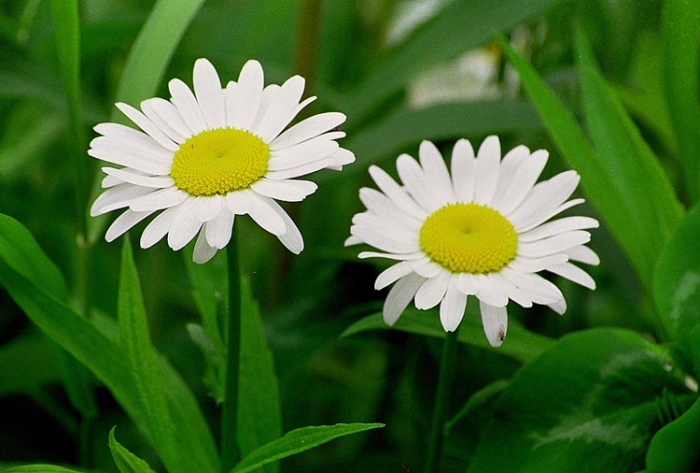Oxeye Daisy
(Leucanthemum vulgare)
Oxeye Daisy (Leucanthemum vulgare)
/
/

Dr. Nick V. Kurzenko
Public Domain











































































Estimated Native Range
Summary
The Oxeye Daisy is valued for its hardiness and the simplicity of its daisy-like flowers, which can brighten up gardens and meadows. It is often used in perennial borders, wildflower meadows, and as ground cover due to its spreading habit. This plant is relatively low-maintenance, requiring minimal care once established. It prefers full sun to part shade and can tolerate a range of soil conditions, although it thrives in average, damp soils. Deadheading spent flowers can encourage further blooming and maintain a tidy appearance. Cultivars like ’May Queen’ offer early blooming, adding to the plant’s appeal. While generally disease-resistant, Oxeye Daisy can become invasive if not managed, spreading aggressively in some regions outside its native range.CC BY-SA 4.0
Plant Description
- Plant Type: Herb
- Height: 1-3 feet
- Width: 1-2 feet
- Growth Rate: Moderate
- Flower Color: White
- Flowering Season: Spring, Summer
- Leaf Retention: Deciduous
Growth Requirements
- Sun: Full Sun
- Water: Low
- Drainage: Fast, Medium
Common Uses
Bee Garden, Bird Garden, Border Plant, Butterfly Garden, Deer Resistant, Drought Tolerant, Edible*Disclaimer: Easyscape's listed plant edibility is for informational use. Always verify the safety and proper identification of any plant before consumption., Hummingbird Garden, Low Maintenance, Rabbit Resistant, Showy Flowers
Natural Habitat
Native to meadows, pastures, and the edges of fields and roadsides across Europe, the Caucasus, and Siberia
Other Names
Common Names: Common Daisy, Field Daisy, Marguerite, Marguerite Daisy, Margriet, Moon Daisy, Yellow Daisy, White Daisy, Whiteweed, Dog Daisy
Scientific Names: , Leucanthemum vulgare, Leucanthemum vulgare var. vulgare, Leucanthemum praecox, Leucanthemum vulgare subsp. praecox, Chrysanthemum leucanthemum f. leucanthemum, Chrysanthemum leucanthemum subsp. leucanthemum, Chrysanthemum leucanthemum var. leucanthemum, Chrysanthemum leucanthemum var. subpinnatifidum, Leucanthemum lanceolatum
GBIF Accepted Name: Leucanthemum vulgare Lam.